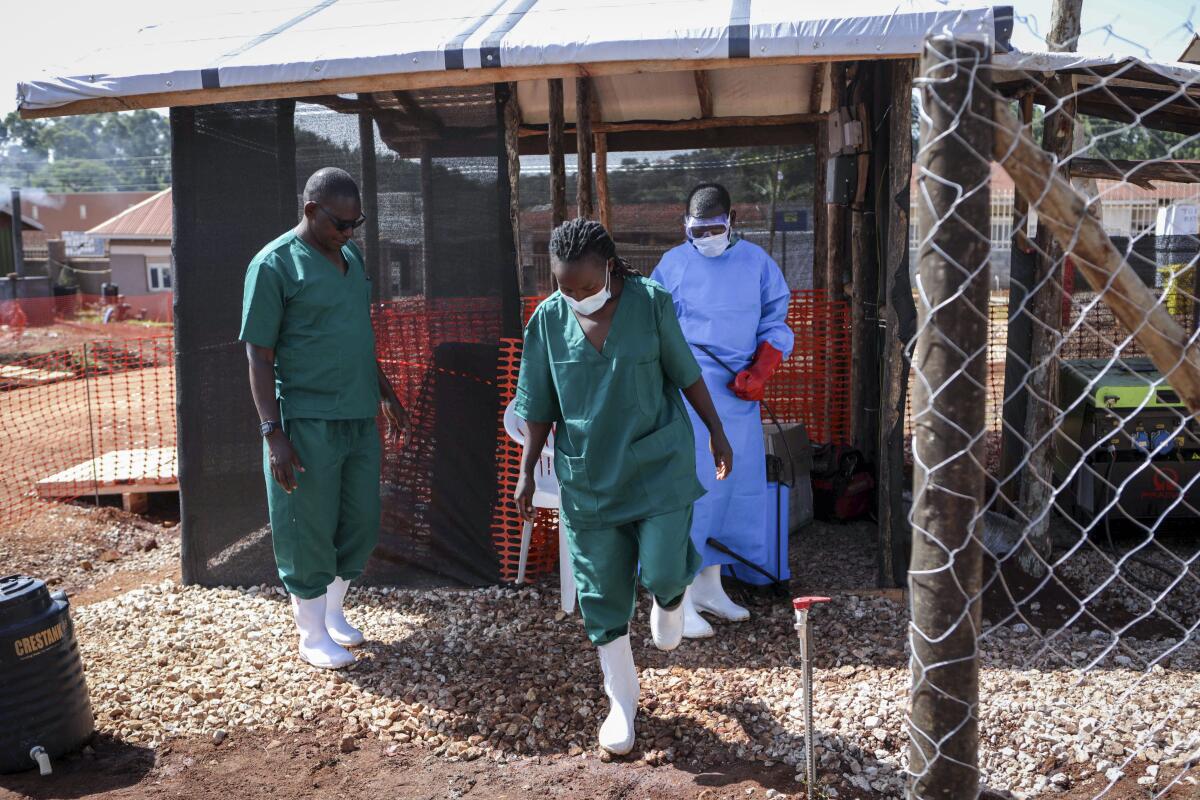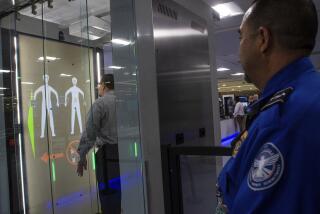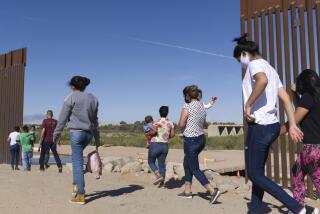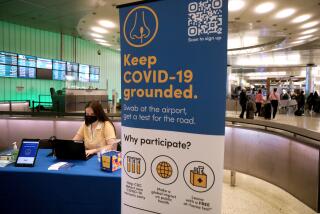U.S. to begin screening travelers coming from Uganda for Ebola

- Share via
WASHINGTON — The United States will begin screening travelers coming from Uganda for Ebola as an additional precaution aimed at trying to prevent an outbreak in the African country from spreading, the Biden administration said Thursday.
There have been no Ebola cases from the outbreak reported outside Uganda, and the risk in the U.S. is considered low. U.S. officials described the screening move as an additional precaution.
The screenings will begin immediately. Travelers who have been in Uganda at any point during the past 21 days, the incubation period for the virus, will be redirected to one of five U.S. airports for Ebola screening: Kennedy International Airport in New York, Washington Dulles International Airport, Newark Liberty International Airport in New Jersey, Chicago’s O’Hare International Airport and Hartsfield-Jackson Atlanta International Airport.
The screening applies to any passenger who was in Uganda, including U.S. citizens. It involves a temperature and symptom check conducted by the Centers for Disease Control and Prevention. The CDC will also collect contact information that will be shared with local health departments at the travelers’ destination.
The administration says about 145 people per day enter the U.S. from Uganda, with most already arriving at one of the five large airline hubs. Anyone scheduled to fly into a different airport will be rebooked by their airline, the administration said.
Also Thursday, the CDC sent a health alert to doctors urging them to get a travel history from patients who have Ebola-like symptoms.
The Ebola virus is mainly spread through contact with blood and other bodily fluids of an infected person. Symptoms include fever, vomiting, diarrhea, muscle pain and sometimes bleeding. There are Ebola vaccines, but not for the Sudan strain causing the current outbreak.
This marks the sixth Ebola outbreak in Uganda, but this one has escalated quickly. As of Thursday, there have been 44 confirmed cases and 10 confirmed deaths since the first case was diagnosed Sept. 19.
More to Read
Sign up for Essential California
The most important California stories and recommendations in your inbox every morning.
You may occasionally receive promotional content from the Los Angeles Times.










